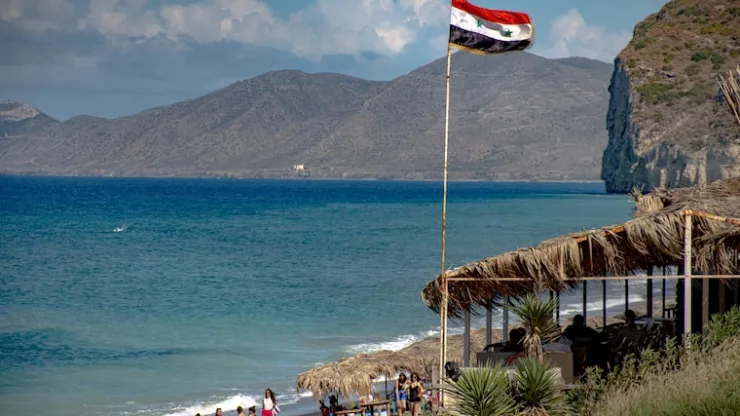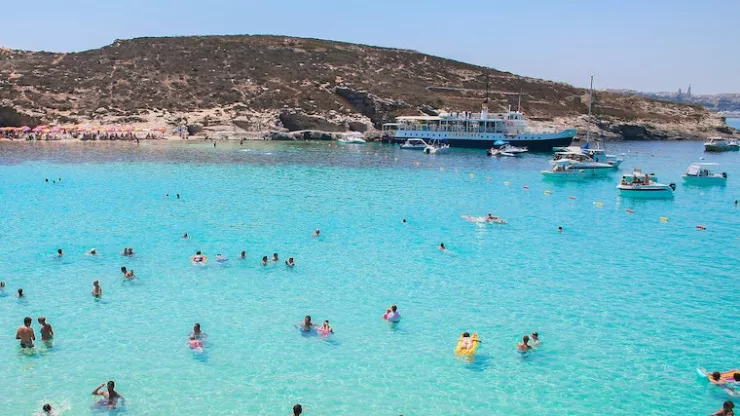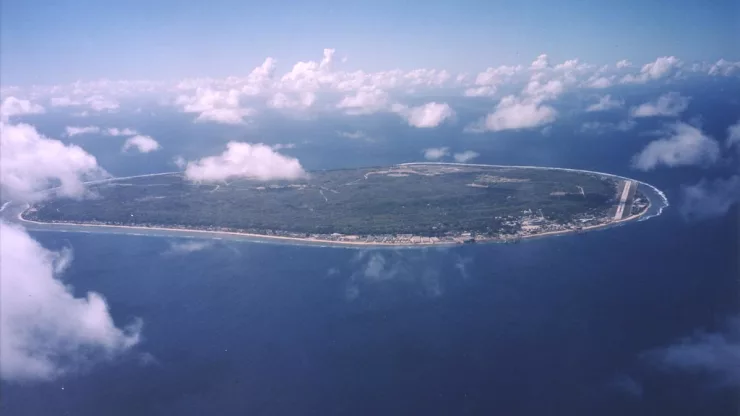Quick Facts
Capital: Tallinn
Population: 1.3 million
Official Language: Estonian
Currency: Euro (€)
Government: Parliamentary Republic
Estonia, a captivating northern European country nestled along the Baltic Sea, is renowned for its history, enchanting landscapes, and technological advancements.
In this article, we’ll uncover 27 fascinating facts about Estonia to quench your thirst for knowledge about this incredible destination.
Our article targets travelers, history buffs, and culture enthusiasts seeking to learn more about Estonia.
- Estonia is one of the least populous countries in Europe. With a population of around 1.3 million, Estonia ranks as one of the least densely populated countries on the continent. This relatively small population allows for vast, untouched natural landscapes and a peaceful atmosphere.
- Estonia has over 2,000 islands. Estonia’s stunning coastline is dotted with over 2,000 islands, each offering unique flora, fauna, and picturesque landscapes. Some of the most popular islands to visit include Saaremaa, Hiiumaa, and Muhu.
- Estonia is a leader in digital society. Estonia is often dubbed e-Estonia due to its advanced digital infrastructure and innovative e-government services. Estonians can vote online, access medical records, and even start a business within minutes, thanks to their digital-first approach.
- Estonia boasts a vibrant tech scene. Estonia is the birthplace of several world-famous tech companies, such as Skype, TransferWise (now Wise), and Bolt. Its tech-driven culture has earned Estonia a reputation as a hub for startups and innovation.
- Estonia is among the greenest countries in Europe. Over 50% of Estonia’s land area is covered by forests, and the country is home to a diverse range of plant and animal species. Estonia has several protected national parks and nature reserves that showcase its pristine landscapes.
- Estonia has a UNESCO World Heritage site. Tallinn’s Old Town, Estonia’s capital city, is a UNESCO World Heritage site that boasts well-preserved medieval architecture, charming cobblestone streets, and historic landmarks.
- Estonia is known for its unique Song and Dance Celebration. The Estonian Song and Dance Celebration, held every five years, is a massive cultural event that brings together tens of thousands of performers and spectators. The festival is inscribed on UNESCO’s Representative List of the Intangible Cultural Heritage of Humanity.
- Estonia’s flag has deep symbolism. The Estonian flag consists of three horizontal stripes: blue, black, and white. Blue represents the sky and sea, black symbolizes the country’s dark past, and white signifies hope for the future.
- Estonia is a popular destination for birdwatching. Estonia’s diverse ecosystems and prime location along migratory routes make it a haven for birdwatching. Over 380 bird species have been recorded in Estonia, making it a must-visit destination for bird enthusiasts.
- Estonia has the highest literacy rate in the world. With a literacy rate of nearly 100%, Estonia boasts one of the highest literacy rates globally. Education is highly valued, and the Estonian education system is regarded as one of the best in the world.
- Estonia is home to a unique meteorite crater field. Kaali crater, located on the island of Saaremaa, is a group of nine meteorite craters formed around 4,000 years ago. The main crater is the most easily accessible and offers a fascinating glimpse into the impact of celestial objects on Earth.
- Estonia has its own traditional sport. Kiiking is an Estonian extreme sport that involves swinging on a giant swing set. The goal is to rotate 360 degrees around the spindle, and the swings can reach impressive heights.
- Estonia has a unique marshland ecosystem. Soomaa National Park is home to a vast and mysterious marshland, which can be explored by walking on wooden trails or paddling traditional dugout canoes called “haabjas.” This unique environment offers a tranquil and otherworldly experience.
- Estonians celebrate their own Valentine’s Day. Known as Sõbrapäev or “Friend’s Day,” Estonians celebrate friendship on February 14th instead of focusing solely on romantic relationships. This inclusive holiday encourages people to show appreciation for all their loved ones.
- Estonia has a rich tradition of folk tales and mythology. Estonian folklore is filled with tales of magical creatures, spirits, and epic heroes. These stories have been passed down through generations and continue to play a significant role in the country’s cultural identity.
- Estonia has a thriving craft beer scene. Over the past few years, Estonia has seen a surge in craft beer production, with breweries experimenting with unique ingredients and flavors. This burgeoning industry has put Estonia on the map as a destination for beer aficionados.
- Estonia has a distinctive national instrument. The kannel is a traditional Estonian stringed instrument similar to a zither. It has a unique sound and plays a central role in Estonian folk music.
- Estonia is home to several unique wildlife species. The country is home to the elusive European brown bear, the majestic Eurasian lynx, and the rare flying squirrel, making it a haven for wildlife enthusiasts.
- Estonia has the world’s highest number of supercentenarians per capita. Estonia has a remarkably high number of people who live to be over 110 years old, with many attributing this longevity to the country’s clean environment and healthy lifestyle.
- Estonian language is one of the hardest to learn. Estonian, a Finno-Ugric language, is considered one of the most challenging languages to learn for English speakers due to its complex grammar and unique vocabulary.
- Estonia has the world’s longest ice road. During winter, an ice road stretches for 26.5 km (16.5 miles) between the mainland and the island of Hiiumaa, offering a unique and chilly mode of transportation.
- Estonia has a vibrant street art scene. In recent years, Estonia has become a hotspot for street art, with local and international artists transforming urban spaces with colorful murals and creative installations.
- Estonia is home to a unique underwater prison. Rummu quarry, a submerged prison-turned-tourist attraction, offers visitors the chance to dive and explore an eerie underwater world filled with abandoned buildings and machinery.
- Estonia has the world’s only drive-in chapel. Located in the town of Narva-Jõesuu, this unique drive-in chapel allows visitors to receive blessings and prayers from the comfort of their vehicles.
- Estonia is a pioneer in renewable energy. Estonia is investing heavily in renewable energy sources, such as wind, solar, and biomass. The country aims to produce 42% of its energy from renewable sources by 2030.
- Estonia has the highest number of meteorite craters per square kilometer. With over 400 identified impact craters, Estonia holds the world record for the highest number of meteorite craters per land area.
- Estonia is home to Europe’s largest waterfall by volume. Jägala Waterfall, located in northern Estonia, is the largest waterfall by volume in Europe. It boasts a width of 50 meters (164 feet) and a height of 8 meters (26 feet).
Estonia FAQ
Is Estonia a safe country to visit?
Yes, Estonia is considered a safe country for travelers. It has a low crime rate, and visitors can generally feel secure while exploring the country.
However, it’s always advisable to take standard precautions and remain aware of your surroundings.
What is Estonia famous for?
Estonia is famous for its rich history, medieval architecture, untouched nature, digital advancements, and vibrant tech scene.
It is also known for its numerous islands, unique folklore, and traditional culture.
Do Estonians speak English?
Yes, many Estonians speak English, especially among the younger generation.
English is widely taught in schools, and it’s common for people working in tourism, hospitality, and international business to be proficient in English.
What is the best time to visit Estonia?
The best time to visit Estonia is during the summer months (June to August) when the weather is warm and the days are long.
However, travelers seeking winter activities can enjoy skiing, ice skating, and winter festivals during the colder months (December to February).
What is the currency in Estonia?
The currency in Estonia is the Euro (€). Credit cards are widely accepted, and ATMs can be found in most cities and towns.
Do I need a visa to visit Estonia?
Estonia is a member of the Schengen Area, so visitors from other Schengen countries can enter without a visa.
Citizens of the United States, Canada, Australia, and many other countries can visit Estonia for up to 90 days without a visa.
It’s always best to check the latest visa requirements with your local Estonian consulate or embassy before traveling.

I am a fun fact enthusiast and creator of Facts On Tap.
I love to share my knowledge and curiosity with readers and inspire them to learn something new every day.
When I’m not writing, I enjoy traveling, reading, and playing trivia games with my friends.





